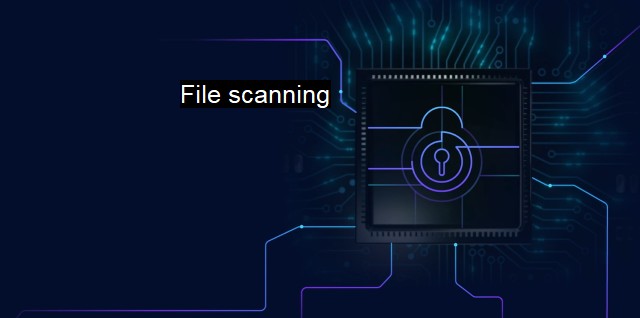What is File scanning?
The Importance of File Scanning in Antivirus Software for Cybersecurity in the Modern World
File scanning is an essential part of antivirus solutions and cybersecurity measures. It can be defined as systematically checking and analyzing files on a computer system or a network to detect potential threats, including viruses or malware. The primary purpose of file scanning is to safeguard servers, systems, and databases from potential threats that can damage or compromise sensitive information.Often overlooked, file scanning plays a pivotal role in system protection, ensuring electronic data is continuously safe from cyber threats. It aids IT experts in discovering, identifying, and combating malware, drastically reducing the risk of cyber-attacks which can cripple an individual workstation or an entire network within nanoseconds. An antivirus program achieves this through various scanning methods such as real-time protection, automated background scanning, and user-initiated full system scans.
Real-time file scanning provides immediate protection by scanning files when they are downloaded, run, modified or accessed in real-time. It helps prevent potential threats from penetrating the system. Conversely, background scanning scans the entire system at scheduled intervals when resources are available and the system is idle. User-initiated full system scans are also an option where the user periodically instructs the antivirus software to check every single file and folder in the system.
An effective scanning process identifies all geometries of files, including documents, images, executable files, system files, and any other file format. File scanning software uses two primary techniques for locating harmful entities; signature-based detection and heuristic-based detection.
In signature-based detection, individual files are scanned and compared to a database of known virus 'signatures.' These signatures, essentially binary patterns, are unique to each malware or virus. If a match is found, the antivirus software responds to neutralize or eliminate the threat. this method primarily identifies known malware and may not be as effective in combating new, unrecorded threats.
Therefore, heuristic-based detection technique is also applied for malware detection. Instead of relying on identified signatures, this approach analyses a file's structure and behavior. If the software detects a file behaving suspiciously, it is flagged as a potential threat. This technique enables the detection of newer forms of viruses that signature-based scanning may lack.
On information systems exchange routes, file scanning works in collaboration with firewalls and intrusion detection systems (IDS) to counter preliminary intrusion attempts, malicious code, and unauthorized data access. network or server file scanning can front the battle against Distributed Denial of Service attacks (DDoS). Regular file scanning aims to tackle latent vulnerabilities on networks and servers, minimizing the risk of potential cyber threats.
Importantly, file scanning also helps maintain system health and performance. Identifying and eliminating unnecessary and potentially harmful files can enhance the overall system performance, reducing processing lags and improving the speed and efficiency of operations.
Weak or out-dated file scanning measures can put precious personal and sensitive corporate data at risk. Alertness to such threats, in the form of efficient scanning technology, is no longer optional in our increasingly digital world but should be considered a necessity.
File scanning is a powerful tool in the cybersecurity proficiency arsenal and a vital aspect of antivirus solutions. Its early threat detection capabilities can insulate a system by providing a safeguard against known and unknown cyber threats. Continuous development of file scanning techniques in combination with a robust cybersecurity strategy can significantly reduce the risks associated with data breaches and system compromises.

File scanning FAQs
What is file scanning?
File scanning refers to the process of analyzing files for known or potential security threats using an antivirus or cybersecurity tool. The tool scans the file's code and data to identify any malicious content and prevents it from causing harm to the system.What types of security threats can be detected through file scanning?
File scanning can detect various types of security threats such as viruses, malware, spyware, trojans, worms, and other potentially harmful software. It can also detect suspicious or suspiciously coded files that could be used to perform unauthorized activities on the system.How often should file scanning be performed?
File scanning should be performed regularly, at least once a week, to ensure the system is protected from potential security threats. Daily scans are recommended for high-risk systems that deal with sensitive data or are susceptible to constant attacks.Can file scanning detect all security threats?
Although file scanning can detect a wide range of security threats, it is not foolproof. Advanced threats or zero-day attacks may go undetected until new virus definitions or security patches are updated. It is crucial to combine file scanning with other security measures such as firewalls, intrusion detection, and data encryption to provide comprehensive protection against cybersecurity threats.| | A | | | B | | | C | | | D | | | E | | | F | | | G | | | H | | | I | | | J | | | K | | | L | | | M | |
| | N | | | O | | | P | | | Q | | | R | | | S | | | T | | | U | | | V | | | W | | | X | | | Y | | | Z | |
| | 1 | | | 2 | | | 3 | | | 4 | | | 7 | | | 8 | | |||||||